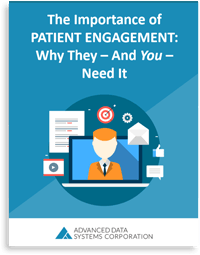Medical professionals need to remain ever vigilant when it comes to screening for infectious diseases in order to preserve the health of their patients, staff, and the general population. This is particularly important in cases of predictable epidemics (such as during each flu season) as well as the emergence of diseases in other countries that are poised to make a leap to the United States. A case in point is Ebola, which has been all over the news in recent days. Americans are coming to terms with the reality that routine air travel makes it easier for infected people to spread a highly dangerous disease regardless of national borders. We have to face the fact that Ebola is here now, at least to some degree. For this reason, Electronic Health Record systems should be able to handle Ebola screening questions right now, and not years from now.
 Revenue Cycle ManagementGuaranteed to increase your revenue in 90 days
Revenue Cycle ManagementGuaranteed to increase your revenue in 90 days Medical Billing ServicesIncrease your revenue by 10% - 20%
Medical Billing ServicesIncrease your revenue by 10% - 20% Practice ManagementIntelligent automation for staffing efficiencies
Practice ManagementIntelligent automation for staffing efficiencies Radiology Information SystemComprehensive automation for our radiology clients
Radiology Information SystemComprehensive automation for our radiology clients Electronic Health RecordsAnalytics-rich, click-free clinical charting
Electronic Health RecordsAnalytics-rich, click-free clinical charting Patient Experience ManagementTelemedicine, portal, kiosk, texting, and more
Patient Experience ManagementTelemedicine, portal, kiosk, texting, and more All-in-One EHR & PMA unified clinical, financial, and operations platform
All-in-One EHR & PMA unified clinical, financial, and operations platform.png) Healthcare AnalyticsDrive clinical outcomes with reportable analytics
Healthcare AnalyticsDrive clinical outcomes with reportable analytics



